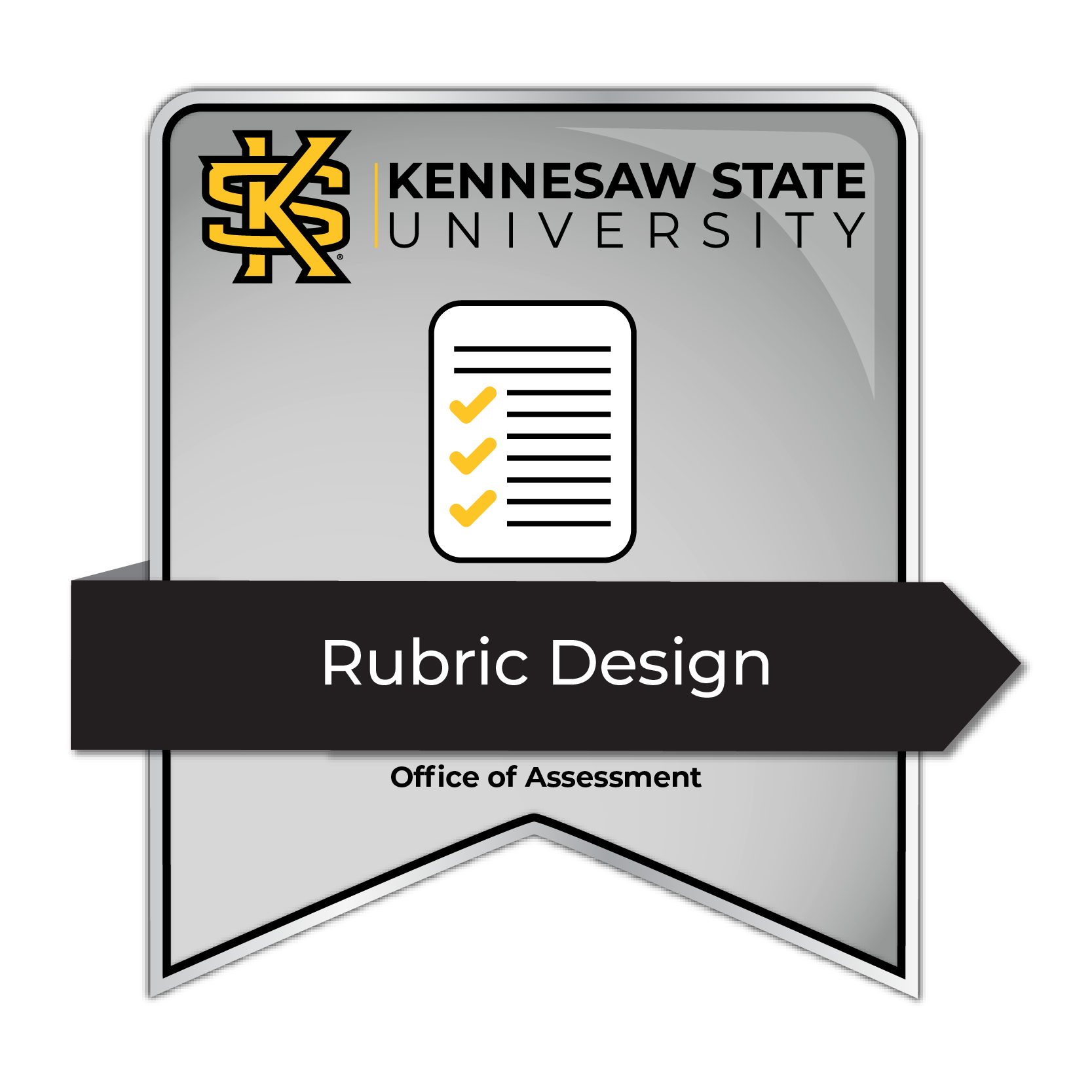ASMT - 103 Rubric Design 
The ‘Rubric Design’ micro-credential documents a learner’s ability to develop and use rubrics to assess student learning and show the learner can support students and faculty in the assessment process. This micro-credential focuses on the benefits of using rubrics in higher education, types of rubrics, principles of designing quality rubrics, rubric examples to match one’s needs, ensuring equitability in rubric scoring, and creating or revising a rubric for a program and/or course.
This micro-credential is in the Academic Assessment Series, which consists of five modules focusing on foundational aspects of academic assessment and continuous improvement.
Upon completion of this micro-credential, learners will be able to:
-
Describe the benefits of using assessment rubrics.
-
Select the type of rubric that is most appropriate for the assessment you intend.
-
Apply principles of designing quality rubrics to create or revise a course or program rubric.
Earning Criteria:
To earn this micro-credential, learners must:
- Complete an online learning material on effective rubric design.
- Submit a rubric design for their own program or course by applying the theories and skills gained from the module.
- Attend a synchronous learning session. The assessment team provides qualitative feedback on the learner’s prior assignment during the synchronous session. Following the session, participants are provided the opportunity to submit the final version and a rubric is used to share additional feedback.
- Submit a final quiz. If learners receive less than 80% on the quiz, they are prompted to retake the quiz.
Skill(s):
- Educational Assessment
- Rubric Design
Tags: #AcademicStandards, #Rubrics, #EvaluativeCriteria, #Assessment
Status: Active
Add to Portfolio (opens a new window)
|

